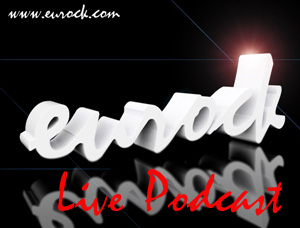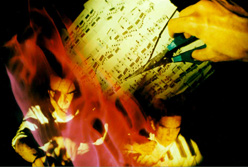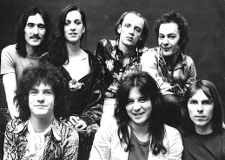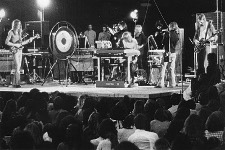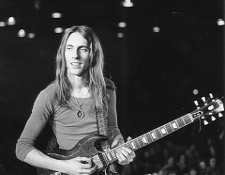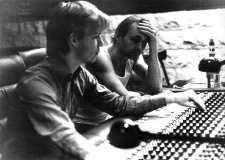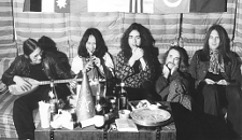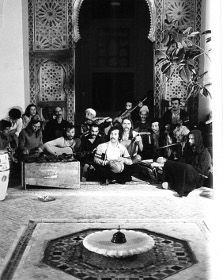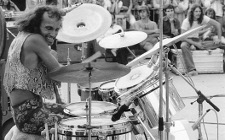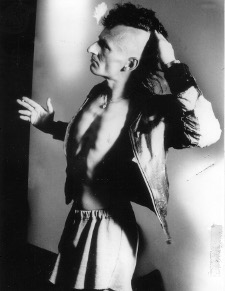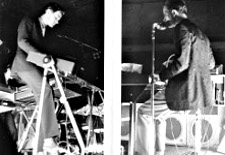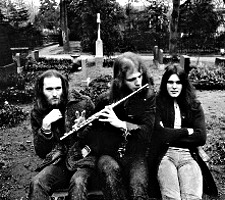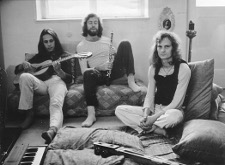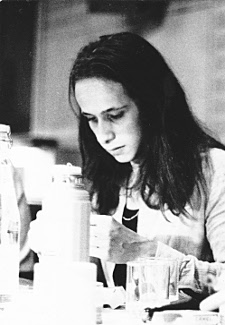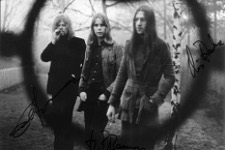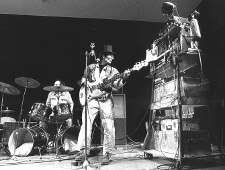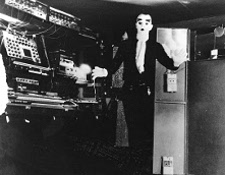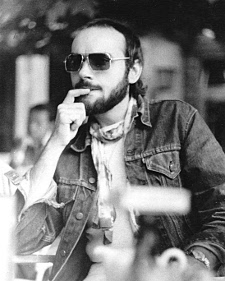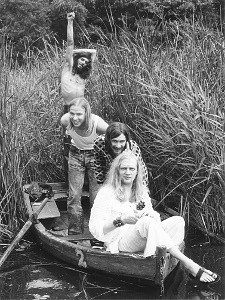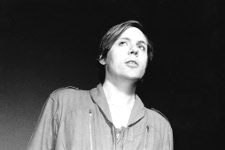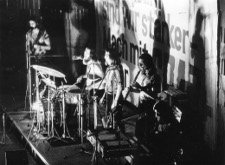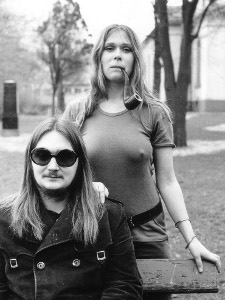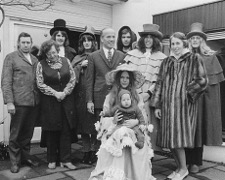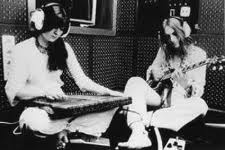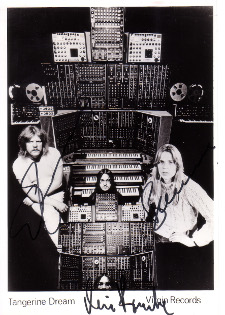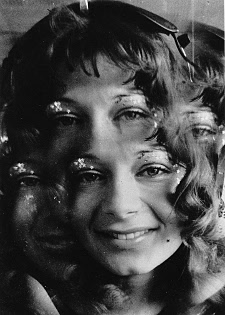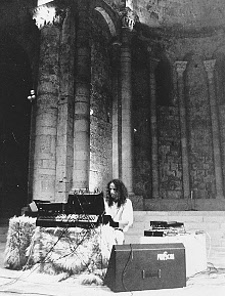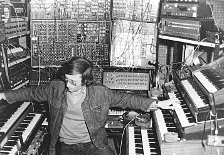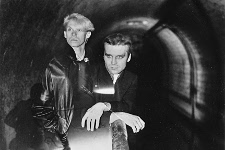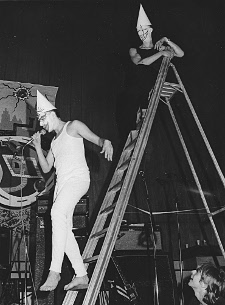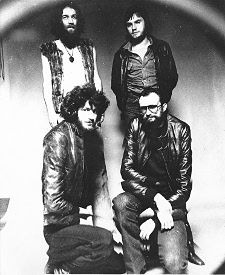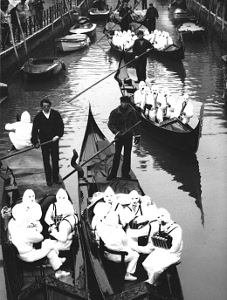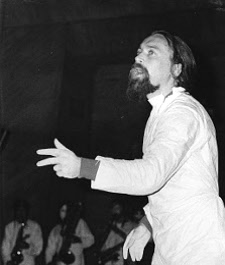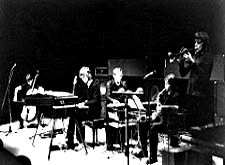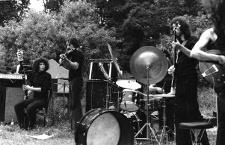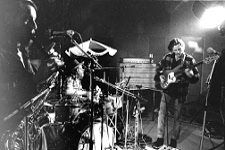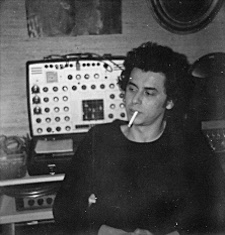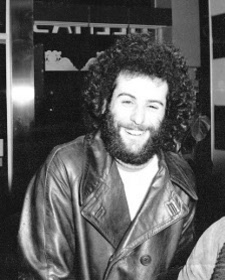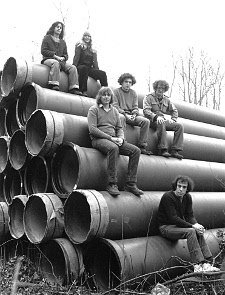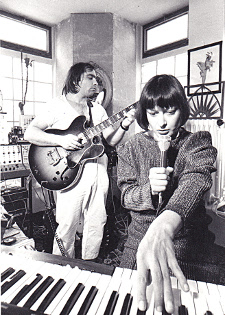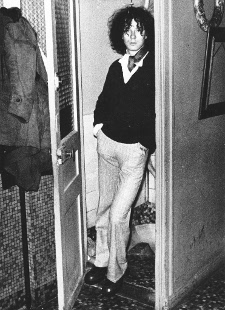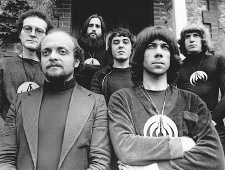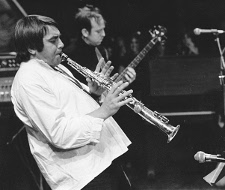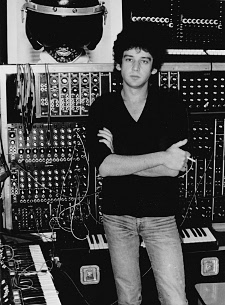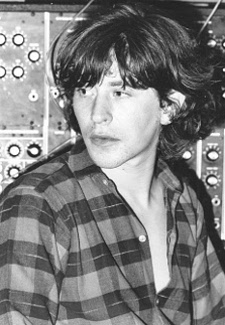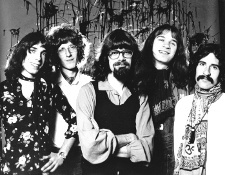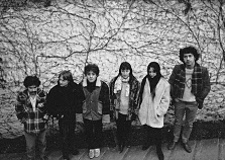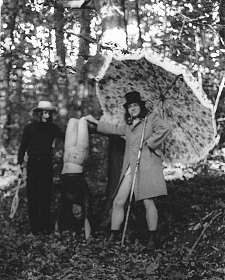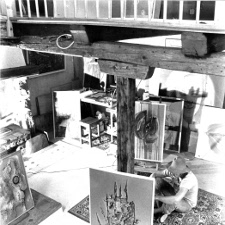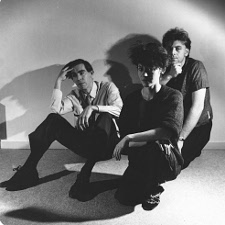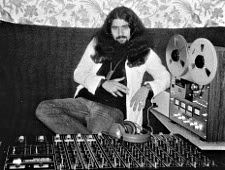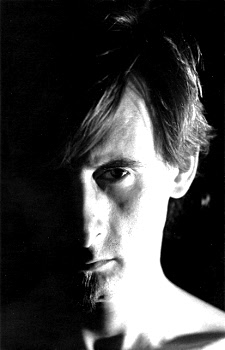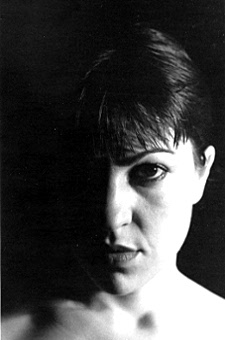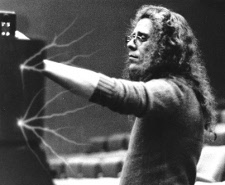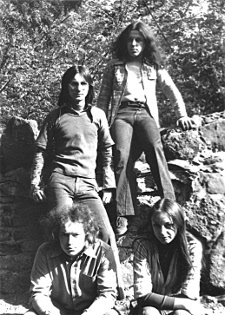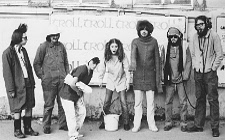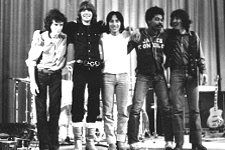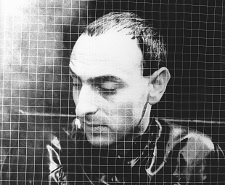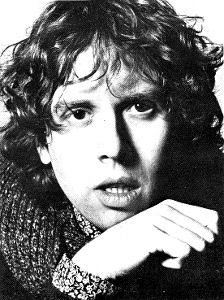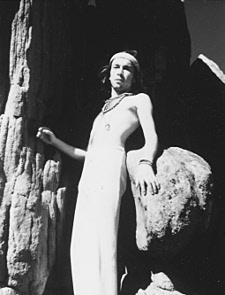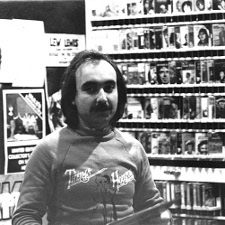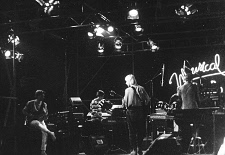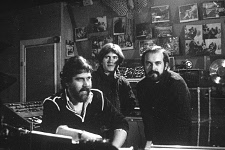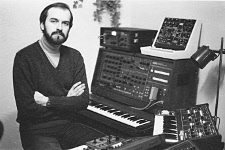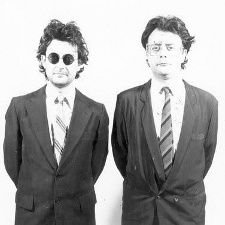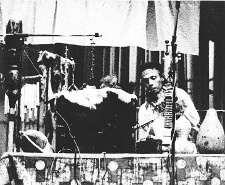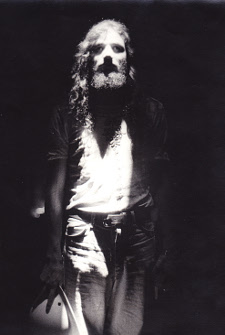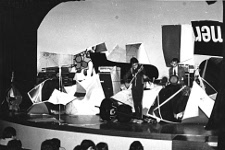The Story so far...
1970's- FM radio, Alternative Magazine & 1st US Indie Distributor of Euro Rock
1980's- D.I.Y. LP + Cassette & CD label
1990's- Distribution via the WWW
2010- Eurock.com ~ Multimedia Podcasting, Interviews & Reviews.
Label & Artist Submissions Accepted for Review...
Klassik Krautrock
Artistes Français
|
Manuel Goettsching 2006 Interview
In the beginnings of the new German rock era in the late 1960s there were several artists and bands that broke through the original barriers of musical schlager tradition in their homeland. None were more pioneering than Ash Ra Tempel. Their first self-titled album is perhaps the ultimate recording by a power trio.
Manuel Goettsching was the guiding light of ART. Hew went on to create a body of work in subsequent years that embodies the spirit of musical exploration and invention, on guitar and electronically.
This interview evolved out of questions submitted, then discussed over dinner, translated, and edited. It is reflective, as well as visionary. As Manuel tells his story and expounds on his ideas, it becomes very clear just why the music he makes was/ is some of the most unique and innovative, whether it be in the past, present or future.
-A. Patterson

(Photo (c) MG ART)
Q: As one of the original German space rock musicians who founded Ash Ra Temple back when the music was very influenced by experimentation and LSD, you have not remained stuck in the past. How would you describe your way of maintaining creative inspiration and the energy to realize your musical ideas now since the scene has changed so completely?
MG:
Initially LSD was only used figuratively at the production of Timothy
Leary & Ash Ra Temple Seven Up in 1972. Except for then, it was
only a minor influence on my music. Surely LSD was a trendy drug at that
time, and played a part in the production of Seven Up, but not for me personally.
It is little known, that it was not primarily the drug, but Timothy Learys
theory of the seven levels of consciousness that the album was about. The
reason everything was reduced to LSD was that Timothy Leary was so well
known as a notorious drug guru. The actual subject of the album was totally
neglected for the most part. In reality, Timothy Leary was a serious
scientist and researcher, and a nice person overall.
Q: So you were not on LSD during the recordings?
MG:
We could have been drinking, using cocaine or opium, or just staying sober.
The album was about the seven levels of consciousness. How we could create
that musically, that was the next step. What to use to help, LSD, magic
mushrooms, or red wine were secondary. Each one does it his own way. We
tried it with LSD because Tim was experimenting with it. But it was all
about the levels of consciousness.
Q: And one can attain that state without the use of drugs?
MG:
Why not?
Q: And that was also Learys opinion?
MG:
It was also his. Tim Leary was a neurologist. He only had experience with
LSD, because he was researching with it, and had a specific interest in it
as a scientist for use as a therapeutic drug. Tim did not like experiments
like they usually were realized in clinical laboratories. He rather
preferred them in a more familiar and private environment. After all it was
about the human psyche. Empirically, people are more open when they do not
see a nervous guy in a white coat that chews on a pencil who asks them what
kind of a colour they see inside a bleak room. That is why his so called
communities were founded, where he held sessions with LSD.
LSD was known about generally before then, and its not Tim who invented it. It was the Swiss chemist Albert Hofmann who turned 100 years old in January, who discovered it in 1943.
Many psychologists had worked with LSD before Tim did research with it, without taking the drug themselves. And Tim was someone who tried it out himself, so he knew more about what he was doing than others.
Seven Up was not my first album. I was inspired earlier to play music, through the music I heard and then played by myself, from the Blues, Improvisation, Experimental Music to Minimal Music. I have always been interested in popular music, as well as experimenting musically. That interest inspired me to find a mixture, or lets say the fusion between popular and experimental music.
Q: Which musician/ groups inspired you?
MG:
As far as composers I would say especially the minimalists Steve Reich, Phillip
Glass and Terry Riley. As musicians, guitarists of the 1960s like Eric
Clapton or Jimi Hendrix.
Q: Is Eric Clapton a great guitarist in your opinion?
MG:
Yes, he played a lot of interesting things with his band Cream. That was
very experimental music at the time. They adapted it from Rock and Blues.
They took a short initial theme, and extended it into an hour long
improvisation, a free flowing form of music. They did that not only in the
studio, but even in concert. That was new at the time, and they were very
successful. The group existed for only a short period. After that, 1970 and
later Eric went back to his roots, played the Blues again, and made his own
successful songs out of it. They were very nice songs, but not experimental
like 1967.
Q: What about Jeff Beck?
MG:
Jeff Beck made a few nice solo albums, which I remember from that time. He
later refined his guitar sound and playing technique, but always stayed
connected with his Blues traditions.
I also remember Peter Green from the beginnings of Fleetwood Mac, and other English blues musicians. They all were students of Alexis Korner and John Mayall. Many famous guitarists went to school & studied with these two important personalities. As a guitarist, of course, this kind of music influenced me.
Q: Can you talk a bit about the Concert For Murnau. What was the creative process like as you wrote the music for that film?
MG:
First of all it was an idea to make a complete electronic music piece for a
silent movie. I was inspired by Willy Sommerfeld, a silent music pianist
from the 1920s, who is now 102 years old and still vamps silent movies on
piano.
Willy Sommerfeld is not only the last silent movie pianist from the silent movie era, He is a phenomenon! He only improvises, without scores, without a concept, sometimes he does not even know what kind of movie will be shown. He just develops a soundtrack off-the-cuff live on piano.
This in fact is similar to the first concerts of Ash Ra Tempel, where the three of us went on stage and did not know what we were going to play. We did not even know which key to play in so just started out of the blue, and over two hours of playing something developed out of it. We were just playing what we felt, and it translated into some sort of music!
Willy Sommerfeld did that on piano in a classical form, so I thought I could do that with electronic music. I wanted to try, using todays technological possibilities, to improvise a movie score electronically.
That turned out to be very difficult as you have to prepare all the electronic equipment and programming, then react to situations in the movie. Using the improvisational method of Willys was the basis of my conception. I selected Schloss Vogelod (Haunted Castle) because it was highly diverse. I started with voices and rhythmic elements that are often used in electronic music, i/e., drum machines and voice sampling.
Then I had the idea to do something with an orchestra, because of the venue in which it would be performed, the State Theatre of Brunswick which usually provides an orchestra with musicians. To integrate classical musicians into an experimental format is really problematic.
You cannot inspire orchestra musicians to improvise; you have to practice with them (that is why Steve Reich established his own orchestra). They want to see written scores for orchestra and singers, there is no room for making things up as you go along.
Another difficulty was having to change the concept due to the movie itself, which came in a completely different version than the one I had seen before. The demo tape was short, fast and made from a black and white film. I then got a restored colour version, which was 20 minutes longer. I played the first version with 24 fps (frames per second) which produced a different level of tension dramatically. After the restoration, the movie created a different sort of visualization, so I had to lay out the music in a different way. Then I decided to use a chamber ensemble provided by the theatre, with two violins, two horns, a cello, plus electronics. Schloss Vogelod (Haunted Castle) is a sort of psycho-thriller, which takes place at a hunting party where the attendants try to expose a murder of the past.
Q: Are you satisfied with what came out, or would you do it different way now?
MG:
I am satisfied with the end result. But it is basically a different approach
and additional elaboration of the theme. Due to the need for preparation,
the electronic and the orchestral passages were created separately except
for two of them. The orchestra needed the scores very early, and then I
added the electronics relatively quickly after. There were only two
rehearsals, but it would have been better if we had more time to rehearse
continually. For the next time there will be only two possibilities, one is
that I can work intensively with the orchestra, using a continuous score,
and the electronics is just a kind of overlaid on top. Or, that I shape it
purely electronically, like I am doing for the film festival in Wroclaw,
Poland. Both ways are exciting.
Q: Would you prefer the Russian Berliner street musicians?
MG:
No, it would be too hard to rehearse with them on the street for two months.
Q: Was Inventions for Electric Guitar a kind of minimalist precursor to E2-E4?
MG:
Inventions for Electric Guitar was a minimalist experiment, but of a
different nature. That composition had a structure and a clearly defined
build-up. It was not recorded in one take, it was repeated for hours until
it sounded the way I liked it. The only thing that is similar to E2-E4 is the
repetitive form of both compositions.
E2-E4 was improvised completely off-the-cuff, while Inventions was recorded during three months of hard work. The structure of Inventions was worked out as a predetermined sequence. Inventions is from 1974, and was based on my earlier experiments on guitar. You can hear some elements on side two of the first Ash Ra Tempel LPs from 1971, but that was completely improvised, not in a composed form. E2-E4 came out of my later improvisations with electronic instruments, the guitar playing a very important and solo function.
Inventions builds upon the musical beginnings I made on guitar that were basically improvised and played live at concerts. The basic approaches of E2-E4 are already in evidence on Ash Ra Temple. By Inventions For Electric Guitar, I worked out a real structure, and there is a certain sequence.
Q: Inventions sounds electronic.
MG:
I played guitar, my only instrument at that time, and tried to make it sound
different than a guitar usually sounds, not like an electric guitar or
traditional Blues guitar. That was rather awkward to do. Creating
sounds you can only produce in the studio
and not on stage was too difficult to reproduce in concert.
That is why I only played a
shortened version of Inventions live on stage: the most concise passages
of it.
Q: Did you use any electronics on Inventions?
MG:
No. On Inventions I only used guitars that were played in different ways. At
concerts, I played the simpler version, which was reproduced without a big
effort.
Q: That was a studio creation then?
MG:
It was a studio recording. Effects that you hear are made as you record
guitar and then play the tape at double speed. You cannot play a piece and
then say Wait, I have to reverse the tape and now you hear how it as sounds
being played backwards. You could not do that on stage.
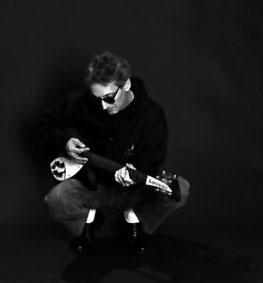
(Photo (c) MG ART)
Q: So it is being played backwards?
MG:
It is played backwards, or alternatively at double or half speed.
After Inventions I had enough of playing guitar for a while and I wanted to do some other interesting things and started playing organ. That brought me to New Age of Earth. For it, I composed things in a different way, on a keyboard instead of a guitar because of the playing technique which is different. You can combine tones in a different way on guitar. You can create other ideas musically due to the intervals and harmonies you do not get from a guitar. That sort of composing experimentation led me to New Age of Earth.
New Age of Earth is not an electronic record. It was music that came about through exploring the possibilities of the keys on a keyboard or piano. It was however sold as electronic music because it was produced electronically.
Q: Does it have anything to do with New Age Music?
MG:
No. That was only a coincidental title. I think New Age Music came later in
the 1980s. There was an esoteric movement in the 1960s in the USA, but that
had nothing to do with New Age Music as we know it today.
In addition, when you hear NEW AGE today, it sounds like, MUSIC, but my record was meant as symbolizing a New Age of Earth, not more and not less. Moreover, at that time, New Age Music did not really exist.
Q: New Age of Earth was more composed than improvised?
MG:
Yes. However, after that, I began working more with synthesizers and
electronic instruments, then started my solo tour in 1976 to release the
album in France. I began buying different kinds of instruments and developed
my music in a more electronic direction. Those are the origins of E2-E4.
Later I started with fashion shows, where I improvised on electronic
equipment.
After that, I released Dream & Desire which I recorded for radio broadcasting, mixed with experiments from the studio. That is where No One Laughs Backwards came from in 1978.
Q: Why was it called No One Laughs Backwards?
MG:
I cannot remember.
Q: E2-E4 came in one go. I cannot believe that. I think you really deliberated how to do it before you did it?
MG:
No. It came out of a quirk of the moment. There was no concept.
For example, I played in the studio yesterday, only I did not record it. That was not so important, because I am not so familiar with that new technique yet. I will have to rehearse for few years until it sounds as perfect as E2-E4. In 1981 when E2-E4 occurred, I had already worked five years long with the instruments that I used, at home, in the studio, and at the fashion shows.
Q: Which instruments do you mean?
MG:
I mean electronic instruments, five keyboards, synthesizer, sequencer etc.
that were used on the recording.
Q: And yesterday?
MG:
Yesterday I worked on a live programme with the Ableton. (Ed. Note: a piece
of software made by a small company in Berlin)
Q: Is that what Klaus Schulze exclusively uses?
MG:
I think he uses it too.
Q: That is the way Schulze plays it. Do you want to learn it that way?
MG:
No. (laughing) What I am busy with now, is something completely new, it has
nothing to do with the old techniques.
Q: But there are musicians that already use it, or not?
MG:
There are musicians that use it all around the world now, and know how to
play it. However, they play different music than I do. In conclusion, it is
only important what kind of music comes out. That is like using an
instrument. When you play guitar, first, you have to learn to play good,
then you can begin to improvise. Willy Sommerfeld had to learn to play piano
good, so that he could improvise so well. Now I have a programme that is
very good, so that you can play around with it. However, you have to learn
it as you learn every other instrument.
Q: And how many years will you need for that?
MG:
I have no idea. That depends how much fun it is to play with.
Q: For the live performance with the Zeitkratzer Ensemble, did you have to write out the other parts for the various instruments, and then do many rehearsals? Alternatively, did the music flow in an organic way, loosely, yet structured as an evolution of the original theme during performance?
MG:
The musical outline for the Zeitkratzer Orchestra was written by Franz
Hautzinger in short form. They were in brief patterns, and after that, the
Zeitkratzer performed it several times. This version, which I did, is based
on the first notation.
Franz Hautzinger selected a few short patterns from the piece, and presented them as music scores. The musicians familiarized themselves with it, and then played their own variations. They improvise. They were given short scores. The music is not composed note by note. It is only a basic structure that they augment.
Moreover, when they finish the original ideas, they start again with the basic structures. It is like a framework they can develop themselves by building upon it. The interesting thing is that the ensemble consists of very good musicians that have much fun improvising and playing music. On the other hand, there is a basic harmony that not everyone plays at the same time; they listen to what the others play. Then develop themselves a form of interplay, without a conductor that says, now you, and now you. They can do that without any instructions. When does the violin player start, when does he stop, they just hear that. Then sometimes, someone stops playing, and lets someone else play, and it works. A good ensemble can do that.
Q: The mix surprised the members of the ensemble?
MG:
Yes. When you
have a recording, you can highlight what is more important, by accenting
certain parts, removing others, and creating a new musical form. I did the
final mix of the E2E4 concert. When the ensemble heard it they liked it a
lot.
Q: With the Zeitkratzer concert, and the release of three new productions at the end of 2005, it seems you have come alive creatively again. Do you have any plans for 2006-07 formulated yet, in terms of other concerts and releases?
MG:
Yes, in April I am
invited to a festival in Japan. It will be my first time with a video
artist, and the first solo concert in 30 years! You cannot count Die Mulde
as a concert, it was more an artistic installation. For the musical program,
I will be playing parts of Die Mulde and Concert for Murnau as
well as some new stuff, plus Sunrain in a new version.
I will perform this program again in Breslau together with Haunted Castle in an electronic version. Then in August, perhaps a second concert where I will perform E2-E4 live for the very first time. We will see.
There are also invitations from China and the U.S.A. And together with the Zeitkratzer I would like to perform from Phoenix to Laguna, then a concert in St. Petersburg with Edward Artemiev, Inventions, live on guitar with three popular friends in the USA, and maybe a composition for the Kronos Quartet.
There is a lot to be done, lets go for it!
Q: Will there be any new releases?
MG:
Yes, a new album with Joe Claussell.
(Ed. Note: a famous New York DJ among the new generation of electronic musicians. He has his own label, shop, and has also recorded with Herbie Hancock. There is also coming in the near future a DVD release of the Zeitkratzer-concert).
I was also thinking about a remix of New Age of Earth. However, because of the work on a new version of Sunrain, I am not inclined now simply to do a remix. There are so many different variations, which were not possible at that time. I am thinking about a new version of Sunrain, but it would not have anything to do with the rest of the album. It would be a re-creation with many different variations and possibilities.
Q: Would it still be called Sunrain?
MG:
Sure. It is a constant motif, which simply varies in a new way.
Q: Will it be a similar composition to E2-E4?
MG:
No for heavens sake, as E2-E4 is not a composition!
Q: You do not think that E2-E4 is your best work?
MG:
Perhaps it is my best work. It is what it is. However, when you take it
apart, I do not know what happens. You cannot really do that. That is why it
is
so hard to play. I have been playing Sunrain for 30 years again and again.
You can play that in so many different variations.
In addition, E2-E4 was just a good moment. There is not much substance to it. There are only two chords and bum-ching. It was correct what Franz wrote, there are short things and you make something out of it. You can write it down note by note, but for what?
Q: Are there other compositions of yours more musically full of life?
MG:
On Inventions all three tracks.
Q: Is there only one on New Age, Sunrain?
MG:
Especially Sunrain, I always played that. Deep Distance is what Joe Claussell
likes, and has played. The second track, Ocean Of Tenderness is
a quiet piece; I do not know what to do with it. On side two, there is a long
electronic track you could
do a lot with. However, I have never played that live, it is too arduous and
not rhythmic. There are basic ideas in it that you might make an orchestral
version out of perhaps.
Q: In which direction does your music now evolve? You cannot call it Kraut, Cosmic or Jazz anymore. Zeitkratzer or Kronos Quartet are interested in it. Are you just evolving, or diverging from your roots?
MG:
Those are just terms. Principally I am not far away from what I have done in
1974 or 1975. Today I simply have tools that are more modern at my disposal,
which offer me different possibilities.
Q: When I listen to Haunted Castle, it sounds very classical. However, it was intended for a specific movie with certain flair and in a certain mood.
MG:
I was always interested in making music that was born today and was made for
tomorrow. That is why I am interested in modern electronic developments.
They allow me to do something that was not possible in the past. When I play
guitar I get certain ideas. When I
play a keyboard, the ideas are very different because my fingers work in
another way. When you
have a synthesizer or a sequencer, you get different ideas, like you never
had before.
Q: What about acoustic instruments?
MG:
Those are instruments of the past. They now sound somewhat obsolete.
Q: Does that mean you will not use them anymore?
MG:
No, surely not, I play a so called instrument myself. Interesting is
the fact that you can interpret a piece like E2-E4 with acoustic instruments
and the result is a composition that is very typical of electronic music. It
works using subtle sound displacements that can only be processed
electronically. You can achieve a floating form with a good interplay of
musicians by an ensemble where the sound can be interpreted in accordance
with the possibilities of the instruments. In most cases, the results are
the opposite. We know that from film music, where electronic instruments are
used to imitate the natural instruments of an orchestra.
I combined those sorts of technique with the Zeitkratzer Ensemble. It was funny to interpret that backwards, but that kind of music really does not translate very well for orchestra. It is more natural when working with electronic instruments. I want to create new ideas and experiments by fusing different styles. I call that contemporary music because you play it today, and it offers creative possibilities in terms of new directions. In my opinion, that is modern music, or the music of today.
[Special Thanks to Ilona Ziok & Myriam Abeillon who helped greatly in making this Interview happen.]
 reviews features podcasts email bio
reviews features podcasts email bio